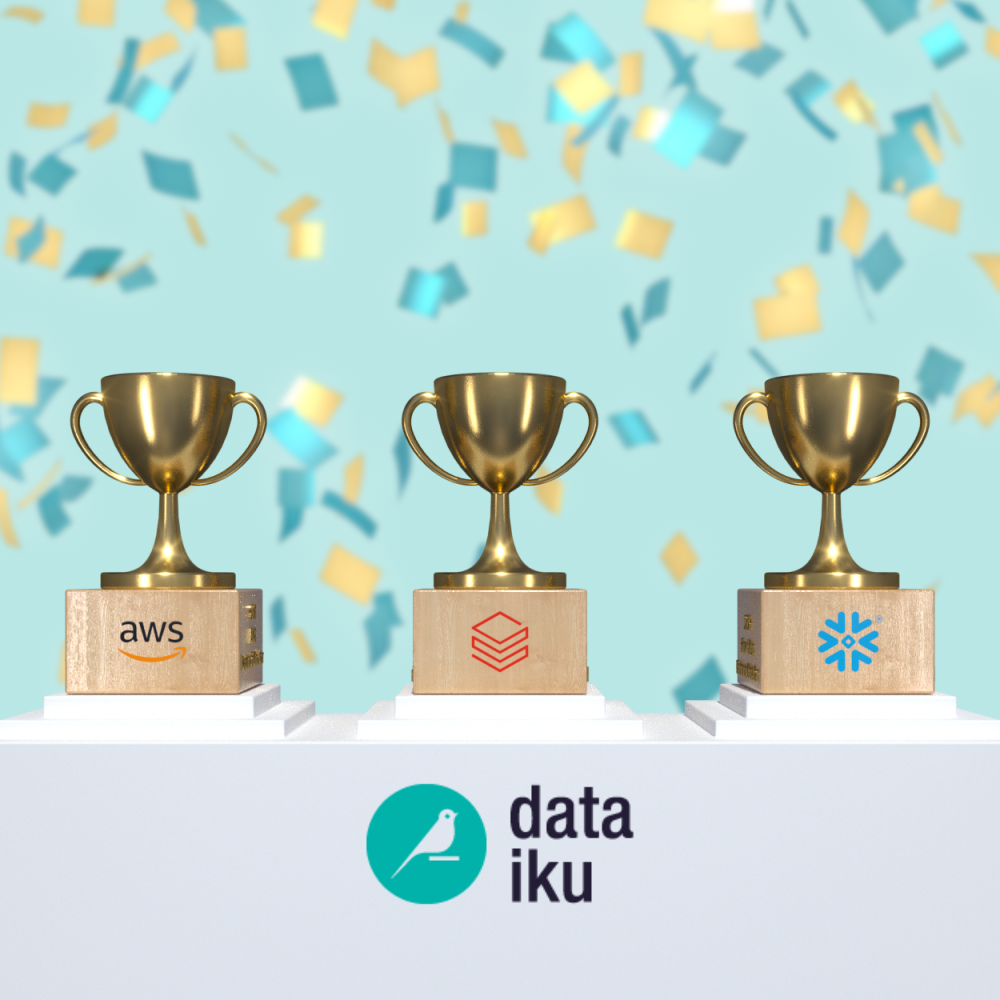Data has always been the foundation of the banking industry, but technological advancements (i.e., GenAI and AI agents), new risks, and an exponential influx of data continue to bring new and complex challenges.
To survive and thrive in today’s environment, banks must leverage data massively across all parts of the organization and in all day-to-day business processes. At the same time, it’s critical to find efficiencies and reduce risk by maintaining the right level of visibility and transparency around data work.
Here are the three key things that banks need to do:
- Reduce Risk With Governance & Ops
- Maximize ROI by Controlling AI Costs
- Empower People With the Right Tools
1. Reduce Risk With Governance and Ops
The nature of the regulatory environment for banks means any work with data (i.e., models, agents) must be visible, transparent, and auditable. Banks looking to expand their use of data at a massive scale must have a thorough understanding of the relationship between responsible AI, AI governance, and AI Ops.
- AI governance: Delivers end-to-end model management at scale, with a focus on risk-adjusted value delivery and efficiency in AI scaling, in alignment with regulations
- AI Ops: Manages the full AI lifecycle (spanning data, models, LLMs, and agents) within a single operational framework to drive scale, governance, and business value
- Responsible AI: Ensures end-to-end model management addresses the specific risks of AI (i.e., discriminatory biases and lack of transparency)
With applied expertise, education, processes, and the right tools (for example, choosing an AI platform with strong governance and MLOps capabilities), the current and future regulatory challenges around data — and especially the use of more advanced technologies like machine learning and AI — are not insurmountable with careful and thorough navigation.
Unify the Workspace
What’s wrong with working among a bunch of different tools? Cobbling together a host of different tools throughout the data pipeline is a quick path to non-compliance, especially as the number of day-to-day data users at banks grows.
Using one tool among analysts for data preparation, another among data scientists for building models, and yet another for validating and deploying those models into a production environment not only is inefficient overall in terms of time spent building and integrating data pipelines, but it leaves lots of room for error from an IT perspective, meaning an increased risk of cost overruns, project delays, data loss, security issues, and more!
Essentially, messy governance between lots of different tools is a recipe for disaster and quality concerns. Choosing the fewest possible technology vendors to get the job done will allow for overall easier governance.

2. Maximize ROI by Controlling AI Costs
It would be naive to ignore the fact that data and AI initiatives represent a cost in and of themselves. And, even if you know what use cases you need to tackle to cut costs, you won’t be able to benefit from them if you don’t have the right systems in place to move quickly and efficiently in data processes.
The reality is that the data and AI project lifecycle is rarely linear, and there are different people involved at every stage, which means lots of potential rework and inefficiencies along the way. You need the tools and the strategy to combat these challenges at their earliest stages.
Reevaluate Your Data & Analytics Stack Now, Not Later
For many banks, the data and analytics stack was built over an extended period of time and was probably dictated by existing investments rather than driven by explicit choice in making new investments. In other words, “We already have tools for x, y, and z, what can we add to complete the stack, and how can we tie it all together?” Unfortunately, this can lead to disparate data, missed opportunities, waste of resources, and, in the end, massively hurt ROI.
The system for accessing and cleaning data should not be locked to the underlying architecture. By separating the two elements you ensure that no matter how many different places data is currently stored, teams won’t have to constantly change their day-to-day processes or tools. Ideally, data access and preparation isn’t just happening in a one-off ETL (extract, transform, and load) tool either. It should be incorporated into downstream systems so that when relevant and appropriate, technical teams can take over the work of analysts and easily apply machine learning techniques.
Examining these choices more closely with costs in mind from the start can provide the necessary spark to rethink the technology stack, including the challenges or inefficiencies it brings. In fact, there are likely areas that can be automated between steps in the life cycle with new tools to boost efficiency and reduce costs. Just because a system is familiar does not mean it is financially friendly; sticking to what you know might get you stuck with costs you can’t afford.
3. Empower People With the Right Tools
It doesn’t make sense (financially or in terms of risk) to search for unicorn data scientists and build teams from scratch. Instead, today’s successful banks leverage the business knowledge of their existing staff, immersing diverse talent across different facets of the organization in data processes.
The ultimate challenge of hiring is less about more staff and instead about tooling, enablement, and introducing efficiency within the current staff. Moreover, empowering individuals to work with more reliable and responsible tools will support the governance initiatives that are also critical to the success of AI integration.
Wrap Math Minds Into the Fold
When it comes to leveraging and incorporating new techniques (like machine learning and AI) or technologies (like centralized, governed data platforms), don’t leave staff with powerful statistics and math skills out of the equation. From actuaries to quants, think about what they bring to the table on data and AI projects as the overall organizational maturity increases. Or inversely, what data science skills and methodologies can bring their role.
Provide the centralized tools that allow these math minds to participate in the data science process seamlessly. This way, everyone is contributing the most value, in a way that is suited to their particular skills, where and how it will be the most impactful.
I think that the best solutions come about from bringing together that diversity of knowledge, of skills, of experience, and trying to come out with the best solutions for our organizations, bringing other stakeholders on the journey to better analytics.
- Metul Parekh, Actuarial Director at Convex Insurance
Upskill People Away From Spreadsheets
Many non-technical individuals have deep knowledge of business systems, needs, and the regulatory environment. Empowering these individuals to work with data directly and collaborate with data science teams will engender enriched decision making for the business teams as well as better informed model creation on the technical side — a win-win!
And, let’s not sugarcoat it. Working only in spreadsheets contributes to significant security concerns, inaccuracies, and inefficiencies with versioning issues, lack of logs or rollback, and is just generally a jaded approach. If complying with regulations and reducing risk are top concerns (and they are), then spreadsheets and other forms of End User Computing (EUC) are a reservoir of problems that will eventually need to be drained.
Tying Everything Together
Here are some key takeaways from the top three ways banks can up their data game.
- Even if you’re not currently leveraging machine learning or AI techniques, start thinking about the systems and tools needed to do so.
- Build a well-defined governance and AI Ops strategy so that regulations won’t stop you from extracting impactful insights from data.
- When it comes to rising costs, data and AI can either be a part of the problem or part of the solution — make it the latter.
- It’s time to break up with spreadsheets.
- Build a unicorn team, not unicorn people.
You probably already noticed, but in case you missed it, the top three ways banks can up their data game are all connected by the need to apply the right tools in the right way. Empowering people to work on a centralized platform or workbench is good for cost savings and also good for MLOps which in turn is good for getting the most out of your existing resources, maximizing ROI, and reducing adverse risk.




